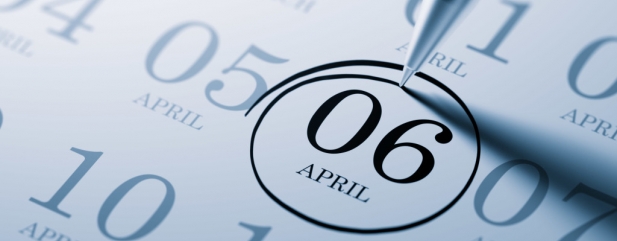Archived article
Please note that tax, investment, pension and ISA rules can change and the information and any views contained in this article may now be inaccurate.
Seven ways your finances change in the new tax year

The new tax year brings a raft of Government changes that will affect the money in your pocket.
We take a look at the big changes from 6 April and whether they are good or bad for your wealth.
1. A rise in income tax allowances
Many of us will effectively get a pay rise when the amount everyone can earn before paying income tax is increased from £11,850 to £12,500, while the amount you earn before hitting the higher-rate tax band moves from £46,350 to £50,000. The Government estimates this will give a boost for 32m people.
Before you start planning how to spend your windfall you need to check the small print. Anyone getting a boost from the higher-rate band increase will be hit by a bigger National Insurance bill.
Employees pay 12% National Insurance up to an upper earnings limit, after which it is reduced to 2%. This upper earnings limit is linked to the higher-rate tax band, meaning employees will now pay the 12% rate on their earnings between £46,350 to £50,000 – rather than the 2% previously. This move wipes out a big chunk of the tax gain from the income tax break.
2. Investors and savers get a boost to tax-free allowances
While the main ISA annual allowance will stay at £20,000 in the new tax year, the amount people can put into a Junior ISA increases from £4,260 to £4,368 – or £364 a month for those with regular monthly payments.
Investors who’ve seen big growth in their investments will get an extra boost. The amount of capital gains you can bank in a year before paying tax rises from £11,700 to £12,000.
The pension lifetime allowance also changes, moving from £1,030,000 to £1,055,000.
3. The newest inheritance tax gets a rise
In 2017 the Government introduced a new inheritance tax break, which helps to shield more of an estate from the 40% inheritance tax.
While the tax-free amount for inheritance tax purposes has been stuck at £325,000 since 2009, the new residence nil-rate band gives a boost to anyone passing on their home.
From April 2017 those with a residential property were given an extra £100,000 inheritance tax-free allowance, increasing to £125,000 last year and in the new tax year it increases again
to £150,000.
However, there is tricky small print with this allowance, as the property must be left to direct descendants, so a child, grandchild, or their spouse.
Anyone with an estate valued at more than £2m will also start to lose the allowance by £1 for every £2 they are over this limit. Read more about how the allowance works here.
4. Automatic enrolment contributions hike
The Government launched its flagship auto-enrolment reform programme in 2012, and all eligible employees should now be enrolled. But this year sees the first big increase in contribution levels as the minimum contribution for all staff rises from 5% to 8% of qualifying earnings.
While employer contributions increase from 2% to 3%, employee contributions rise from 3% to 5%. It means that someone earning around £30,000 and paying in the auto-enrolment minimum will see their personal contribution rise from about £575 to more than £955 for the 2019/20 tax year. Read this article for more details.
5. State pension rises
Anyone who gets the state pension benefits from the ‘triple-lock’, which means that the amount paid out rises each year, based on the highest of average earnings, the Consumer Prices Index measure of inflation or 2.5%.
Last September average earnings were the highest figure at 2.6%, meaning that pensioners enjoy a 2.6% increase in their state pension income in the new tax year.
This brings the basic state pension up to £129.20 per week, while the flat-rate state pension – introduced for those retiring from April 2016 onwards – rises to £168.60.
6. Buy-to-let tax crackdown continues
The Government has gradually removed the tax breaks on offer to landlords over recent years. In particular it is in the process of removing the amount of mortgage interest landlords can use to offset against their profit. Instead buy-to-let investors will get a basic rate tax relief reduction, at 20%.
Previously landlords could use the interest they were charged on their mortgage against their rental income, and only pay tax on the profit. From April 2017 the landlords could only offset 75% of their mortgage costs against their profit, dropping to 50% in 2018 and this ratchets down again to 25% in the new tax year.
The move only affects higher-rate taxpayers, although it also pushes some people into the higher-rate tax bracket, and it has led to many buying up property within a company structure in a bid to reduce their tax bill. You can read more about the changes here.
7. Student loan threshold increases
Graduates get a small pay rise in the new tax year as the amount they can earn before starting to repay their student loan increases. Those who started university in 2012 or after will see the threshold increase from £25,000 to £25,725, the level above which they pay 9% of their earnings.
The change will save these graduates just over £65 a year. Meanwhile, those who studied before 2012 see their threshold rise from £18,330 to £18,935, when they also pay 9% of their earnings, with the move saving them £54.
Important information:
These articles are provided by Shares magazine which is published by AJ Bell Media, a part of AJ Bell. Shares is not written by AJ Bell.
Shares is provided for your general information and use and is not a personal recommendation to invest. It is not intended to be relied upon by you in making or not making any investment decisions. The investments referred to in these articles will not be suitable for all investors. If in doubt please seek appropriate independent financial advice.
Investors acting on the information in these articles do so at their own risk and AJ Bell Media and its staff do not accept liability for losses suffered by investors as a result of their investment decisions.

 magazine
magazine









